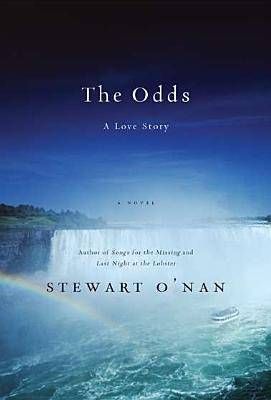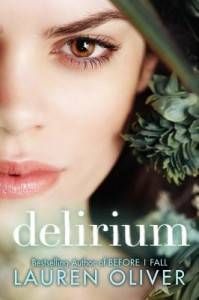
The Odd Couple: Stewart O’Nan and Lauren Oliver

It was a happy accident that I read these two books one right after another, because they speak to each other in unexpected ways. The whole conceit of Delirium is to amplify the, well, delirium of first love by forcing it into a world where it is outlawed and supposedly eradicated. The vacant-eyed elders in this futuristic Portland, Maine tell Lena that her life will be better, happier, once she’s had the “cure” for the disease, because she will not fall victim to its horrifying symptoms. The solution to a placated society is one in which love cannot impair your judgement. I’m sure you can see where this is going, because Lena does fall in love. She falls so hard and so completely that she questions her society and wants to escape to The Wilds, the land just beyond the city boundaries, a place where it is illegal to go, a place where she can love freely.
The Odds is cleverly subtitled A Love Story, but it is a love story in the sense that it is a story about a love, a marriage, a relationship. Like Lena’s love-suppressing government, the dissolution of Art and Marion’s marriage is exaggerated by the setting of the novel: Niagara Falls on Valentine’s Day. In an effort to rekindle their romance (and participate in some hopeful gambling), Art pays for a second honeymoon with nearly maxed-out credit cards. When they get home they will declare bankruptcy, but for now Art will try to save his marriage and his home, while Marion just wants to survive the weekend. The pain and frustration of their looming divorce is palpable, but even more so when they are forced into the ridiculous, manufactured world of Niagara Falls. As they tour the falls and learn about people going over in barrels you are reminded of the rushing inevitability of it all, at least from their perspective. They’ve had their affairs, neglected one another, fallen further and further into debt. They are all at once responsible and innocent for the end of their love story.
We want nothing more than to root for Lena. The lines are drawn and they are clear: Lena is right, her love is right, society is bad. Things are a little bit more blurry in The Odds. Sometimes you want Art and Marion to succeed as a couple, other times you are suffocated by their inability to understand one another.
Reading these two books side by side reminded me why I am an eclectic reader: to experience the passion and anxiety of first love and adolescence and the sense of loss and frustration of a marriage turned sour, all in the same day.












